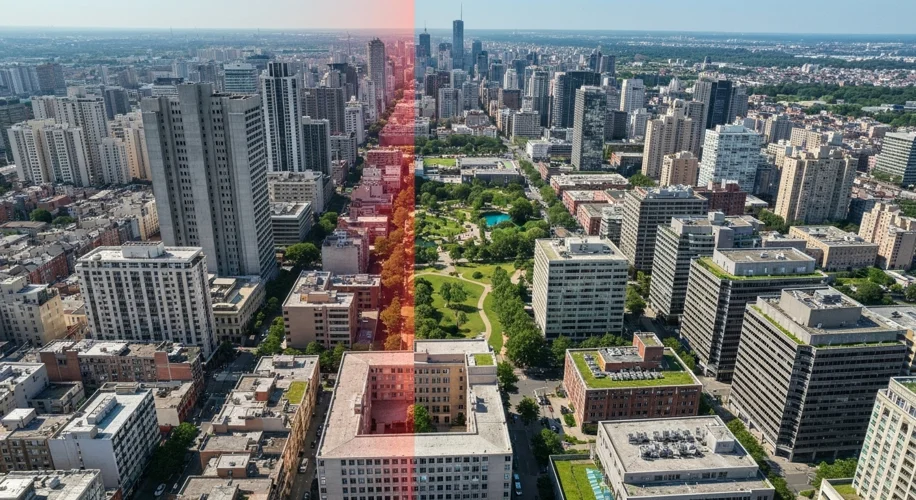As an atmospheric scientist with a focus on urban heat islands, I’ve seen firsthand how our cities can trap heat, turning a warm day into an uncomfortable, and sometimes dangerous, one. It’s a phenomenon known as the “Urban Heat Island Effect,” and it’s something we need to understand to build healthier, more resilient communities.
What Exactly is an Urban Heat Island?
Simply put, an urban heat island (UHI) is a metropolitan area that’s significantly warmer than its surrounding rural areas. This temperature difference is usually greater at night than during the day, and it happens because city environments have a lot more surfaces that absorb and store heat compared to natural landscapes.
Think about it: concrete, asphalt, and buildings absorb solar radiation and then slowly release it. Trees and vegetation, on the other hand, reflect more sunlight and cool the air through a process called evapotranspiration (like sweating for plants!). Cities tend to have less green space and more of these heat-absorbing materials.
Why Does This Matter?
This temperature difference isn’t just about feeling a bit warmer. It has real impacts:
- Increased Energy Demand: Hotter cities mean more air conditioning, leading to higher energy consumption and costs.
- Air Quality Issues: Higher temperatures can worsen air pollution, like ground-level ozone, which is harmful to our health.
- Health Impacts: Extended periods of heat can exacerbate existing health conditions, leading to heatstroke, dehydration, and other heat-related illnesses. Vulnerable populations, including the elderly, children, and those with chronic illnesses, are particularly at risk.
- Water Quality: Warmer runoff from streets and roofs can affect the quality of nearby water bodies.
In cities like my home, Atlanta, we see this effect clearly. During the summer months, the difference in temperature between downtown Atlanta and the surrounding rural areas can be several degrees Fahrenheit, sometimes even more. This can make outdoor activities uncomfortable and place a strain on our infrastructure.
What Can We Do About It?
The good news is that we can actively work to mitigate the urban heat island effect. It’s about smart design and embracing nature:
- Increase Green Spaces: Planting more trees, creating parks, and developing green roofs are some of the most effective ways to cool urban areas. Trees provide shade and release water vapor, actively cooling the air.
- Cool Pavements and Roofs: Using reflective materials for roads, sidewalks, and rooftops can significantly reduce the amount of heat absorbed and stored.
- Green Infrastructure: Incorporating features like permeable pavements, rain gardens, and bioswales can help manage stormwater while also providing cooling benefits.
- Smart Urban Planning: Designing cities with better ventilation, mixed-use developments, and consideration for airflow can help prevent heat from getting trapped.
Understanding the urban heat island effect is a crucial step towards creating cities that are not only functional but also healthy and comfortable for everyone. By incorporating thoughtful design and valuing our green spaces, we can build more resilient urban environments for the future.

